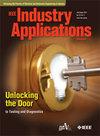Lithium-Ion Battery State-of-Charge and State-of-Energy Simultaneous Estimation via Sparse- Quasi Recurrent Neural Networks(S-QRNN)
IF 4.2
2区 工程技术
Q2 ENGINEERING, ELECTRICAL & ELECTRONIC
引用次数: 0
Abstract
This paper presents an innovative methodology for the concurrent estimation of Lithium-Ion Battery (LiB) State-of-Charge (SoC) and State-of-Energy (SoE) employing Sparse Quasi-Recurrent Neural Networks (S-QRNN). The proposed framework is designed to leverage sparse connectivity patterns to efficiently capture intricate long-term dependencies within battery dynamics. Unlike traditional recurrent neural networks and Convolutional Networks, S-QRNN allows for more effective handling of sequential data, making them well-suited for predicting battery behavior, which exhibits complex temporal dynamics. Furthermore, the sparse connectivity structure reduces computational complexity and enhances the interpretability of the model. To validate the effectiveness and accuracy, adequate experimentation was conducted using laboratory-produced battery data. Moreover, the accuracy and computational efficacy of the proposed scheme have been verified in an OPAL-RT-based Real-Time Power Hardware-In-Loop (HIL) environment. The Opal RT platform provides a reliable and flexible environment integrated with MATLAB/Simulink for hardware-in-loop simulation. Experimental results demonstrate that the proposed method achieves robust and accurate estimation of both SoC and SoE, even in dynamic operational conditions of temperatures and battery load profiles.求助全文
约1分钟内获得全文
求助全文
来源期刊

IEEE Transactions on Industry Applications
工程技术-工程:电子与电气
CiteScore
9.90
自引率
9.10%
发文量
747
审稿时长
3.3 months
期刊介绍:
The scope of the IEEE Transactions on Industry Applications includes all scope items of the IEEE Industry Applications Society, that is, the advancement of the theory and practice of electrical and electronic engineering in the development, design, manufacture, and application of electrical systems, apparatus, devices, and controls to the processes and equipment of industry and commerce; the promotion of safe, reliable, and economic installations; industry leadership in energy conservation and environmental, health, and safety issues; the creation of voluntary engineering standards and recommended practices; and the professional development of its membership.
 求助内容:
求助内容: 应助结果提醒方式:
应助结果提醒方式:


